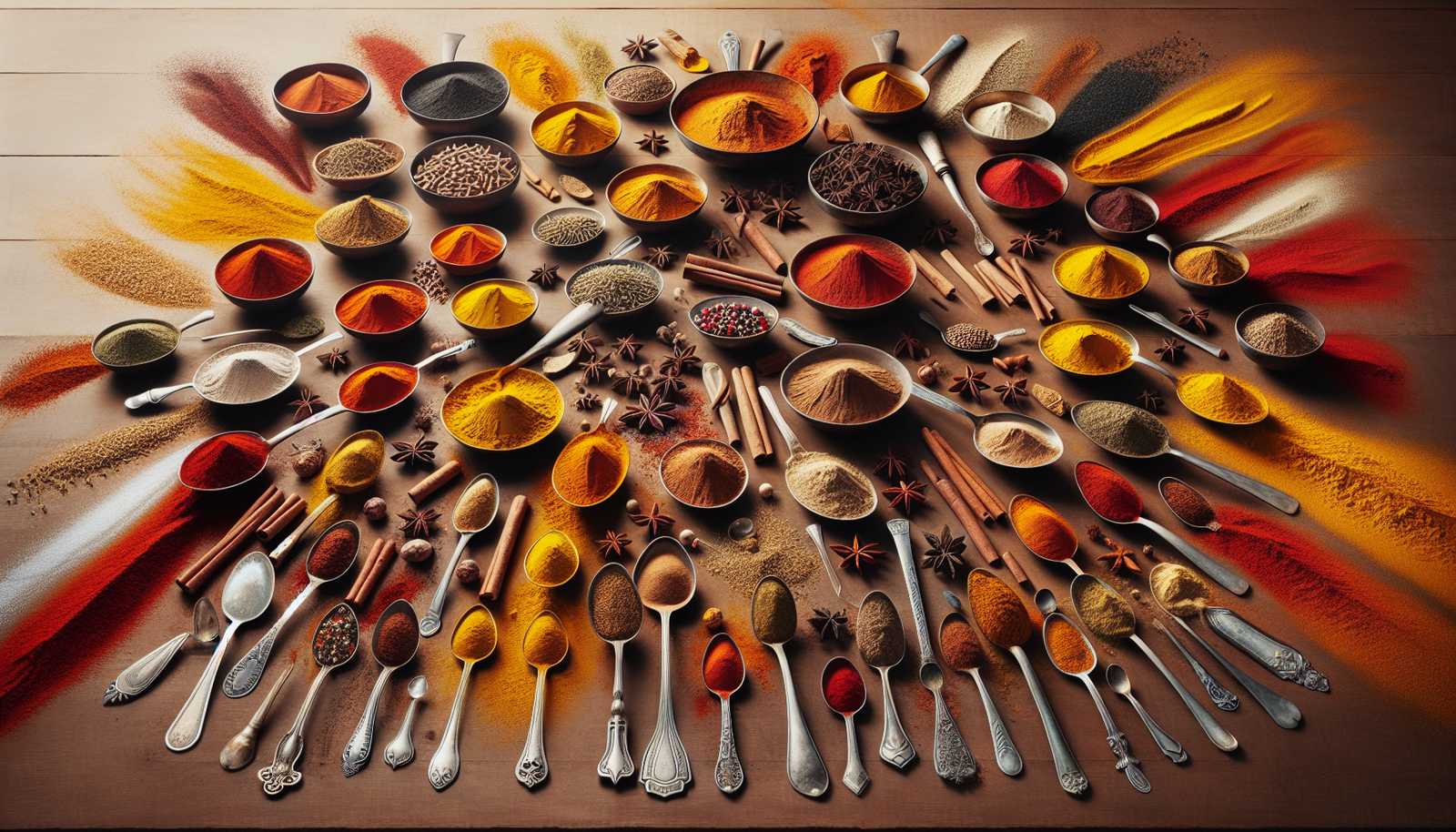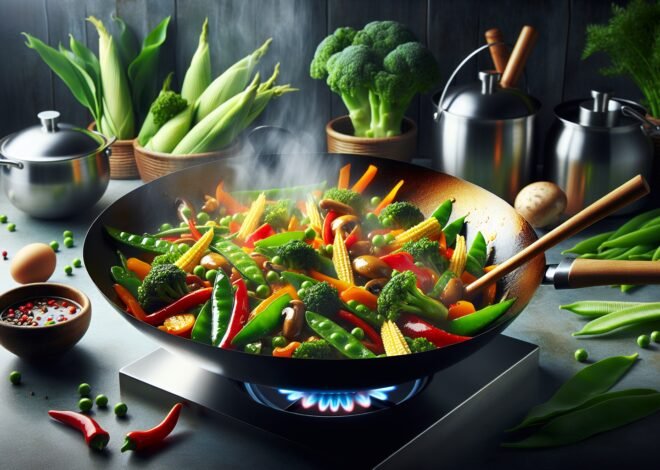
Best Tips for Balancing Spices in Your Dishes
Achieving the right balance of spices in your dishes can make a world of difference. In this article, we’ll share the best tips to harmonize different spices, so you can create perfectly flavored meals that excite the palate without overwhelming it.
Understanding Spice Profiles
Diving into the world of spices enriches the culinary experience. Spices transform dishes, adding depth and character. Understanding spice profiles helps in using them effectively to enhance flavors.
Sweet, Savory, and Pungent Spices
Spices are often categorized into sweet, savory, and pungent. Each category affects dishes uniquely. Sweet spices like cinnamon and nutmeg bring warmth and comfort. They are often used in desserts and pastries, adding a hint of spice to sweet treats.
Savory spices, including thyme and rosemary, work magic in hearty dishes. They complement savory ingredients, balancing richness with their earthy flavors. These spices are staples in roasts and stews, enhancing the taste without overpowering other ingredients.
Pungent spices like black pepper and mustard seed add a sharp kick. They wake up the palate, making dishes more exciting. Pungent spices are perfect for those who enjoy bold, dynamic flavors.
Understanding these categories helps in selecting the right spices for your dish. Matching the spice profile to the dish’s flavor intention can create a harmonious culinary masterpiece.
Bold vs Subtle Spices
Spices vary in intensity. Bold spices, such as chili powder and cayenne, bring heat and assertiveness. They make a statement and are often used in spicy cuisines like Indian and Mexican. These spices demand attention, making them ideal for dishes where spice is the star.
Subtle spices, like saffron and cardamom, offer a gentle touch. They don’t overpower but rather enhance the dish’s natural flavors. Subtle spices are often found in delicate dishes, where their nuanced flavors can shine.
The key is knowing when to use bold or subtle spices. Bold spices are great for hearty, robust dishes. Subtle spices suit lighter, more refined meals. Balancing these spices can elevate any dish, creating layers of flavor complexity.
How Spices Affect Taste
Spices are transformative, altering the dish’s taste profile. They can turn bland ingredients into a symphony of flavors. Each spice affects the taste differently. Some add sweetness, others bitterness, and some bring heat.
Spices can also enhance the natural flavors of the ingredients. A pinch of salt can make sweet flavors pop, while a dash of cumin can add depth to savory dishes. The right spice can highlight the dish’s best qualities, making each bite more enjoyable.
Understanding how spices affect taste allows for creative cooking. Experimenting with different combinations can lead to delightful surprises. It’s about finding the right balance to create a dish that’s not just tasty, but memorable.
Techniques for Balancing Spices
Balancing spices is an art. It requires understanding flavors and how they interact. Mastering spice balance results in dishes that are flavorful and harmonious.
Layering Spices
Layering spices is a technique that adds depth to dishes. It involves adding spices at different stages of cooking. Each layer builds on the last, creating a complex flavor profile.
Start with whole spices, such as cumin seeds or bay leaves, in hot oil to release their essential oils. This forms the base layer. Add ground spices, like turmeric or coriander, during cooking to deepen the flavor. Finish with fresh herbs or spices, like basil or mint, for a burst of freshness.
Layering requires patience and an understanding of cooking times. Each spice layer should be given time to cook and meld with the others. This technique results in a balanced dish with well-rounded flavors.
Tasting and Adjusting Spices
Tasting as you cook is crucial. It allows you to adjust spices to achieve the desired flavor. Start with small amounts, tasting frequently. This helps in identifying if the dish needs more spice or if it’s balanced.
Adjusting spices involves adding more if flavors are too subtle or reducing if too bold. Using acidic ingredients like lemon juice can balance overly spicy dishes. Sweeteners like honey can counteract excessive bitterness.
This technique requires a keen palate and a willingness to experiment. It’s about finding harmony and ensuring no single spice overpowers the dish.
Combining Complementary Flavors
Some spices naturally complement each other. Combining complementary spices can enhance a dish. For example, cumin and coriander often work well together, creating depth and warmth.
Using spice blends, like garam masala or herbes de Provence, can simplify this process. These blends are crafted to complement each other, making them ideal for beginners.
Experimenting with different combinations is key. It’s about discovering new pairings that delight the palate. Combining complementary flavors elevates dishes, making them more complex and enjoyable.
Avoiding Common Spice Mistakes
Spices are powerful tools in cooking, but they can also lead to mistakes. Avoiding common spice errors ensures dishes are flavorful and not overwhelming.
Overpowering Flavors
One of the most common mistakes is overpowering flavors. Adding too much spice can dominate a dish, masking the natural flavors. It’s easy to add more spice, but hard to remove it once added.
To avoid this, start with small amounts and build gradually. Taste as you go, ensuring the spice level enhances rather than dominates. Using neutral ingredients, like potatoes or rice, can help absorb excess spice.
Understanding the potency of each spice is important. Some spices, like clove or star anise, are strong even in small amounts. Use them sparingly to avoid overpowering the dish.
Overshadowing Key Ingredients
Another mistake is overshadowing key ingredients. Spices should enhance, not hide, the main components of a dish. When spices take center stage, the dish loses its intended flavor balance.
Focus on the dish’s key ingredients. Choose spices that complement rather than overshadow them. For example, a delicate fish dish may require subtle herbs rather than bold spices.
This requires an understanding of both the ingredients and the spices being used. It’s about enhancing the dish’s natural flavors, not masking them.
Finding the Right Spice Quantities
Finding the right spice quantities can be challenging. Too little spice can result in a bland dish, while too much can be overwhelming. Measuring spices accurately helps in achieving the perfect balance.
Spices vary in intensity, so understanding their potency is crucial. For example, a teaspoon of cayenne is much spicier than a teaspoon of paprika. Adjust quantities accordingly to match the desired flavor profile.
Experiment with small batches before committing to larger quantities. This allows for adjustments and helps in finding the right balance. It’s about creating dishes that are flavorful, yet balanced.
Conclusion
Finding the perfect balance of spices can take your dishes to the next level. By learning to combine complementary flavors and avoid overpowering spices, you can create meals that are full of depth and harmony. Keep experimenting, and soon you’ll master the art of balanced seasoning that enhances every dish without overwhelming it.
FAQ
How do I balance sweet and savory spices?
Balancing sweet and savory spices involves understanding their roles. Sweet spices like cinnamon and nutmeg pair well with savory flavors like cumin or coriander. Start with small amounts and taste as you go. Adjust based on how the flavors complement each other to create harmony.
Can I mix bold and mild spices together?
Mixing bold and mild spices can create a complex flavor profile. Pairing bold spices like cayenne or smoked paprika with milder ones such as basil or parsley can enhance your dish. Adjust quantities to ensure the bold spices don’t overpower the milder ones.
How can I fix an over-spiced dish?
To fix an over-spiced dish, try diluting it with more of the base ingredients like broth or vegetables. Adding dairy such as cream or yogurt can also help mellow out strong flavors. A touch of sweetness or acidity, like honey or lemon juice, can balance excessive spice.
What are the most common spice mistakes?
Common spice mistakes include over-seasoning, using stale spices, and not tasting as you cook. Avoid these by adding spices gradually and tasting frequently. Store spices in a cool, dark place to maintain their freshness and potency.
How do I layer spices for more depth?
Layering spices involves adding them at different stages of cooking. Start with whole spices in the oil for a base, then add ground spices as the dish develops. Finish with fresh herbs or spices at the end for a burst of flavor.
How do I know if I’ve added enough spice?
Knowing if you’ve added enough spice comes down to taste testing. Take small bites and assess the flavor balance. If the spice enhances the dish without overwhelming it, you’ve struck the right balance. It’s always easier to add more than to take away.











